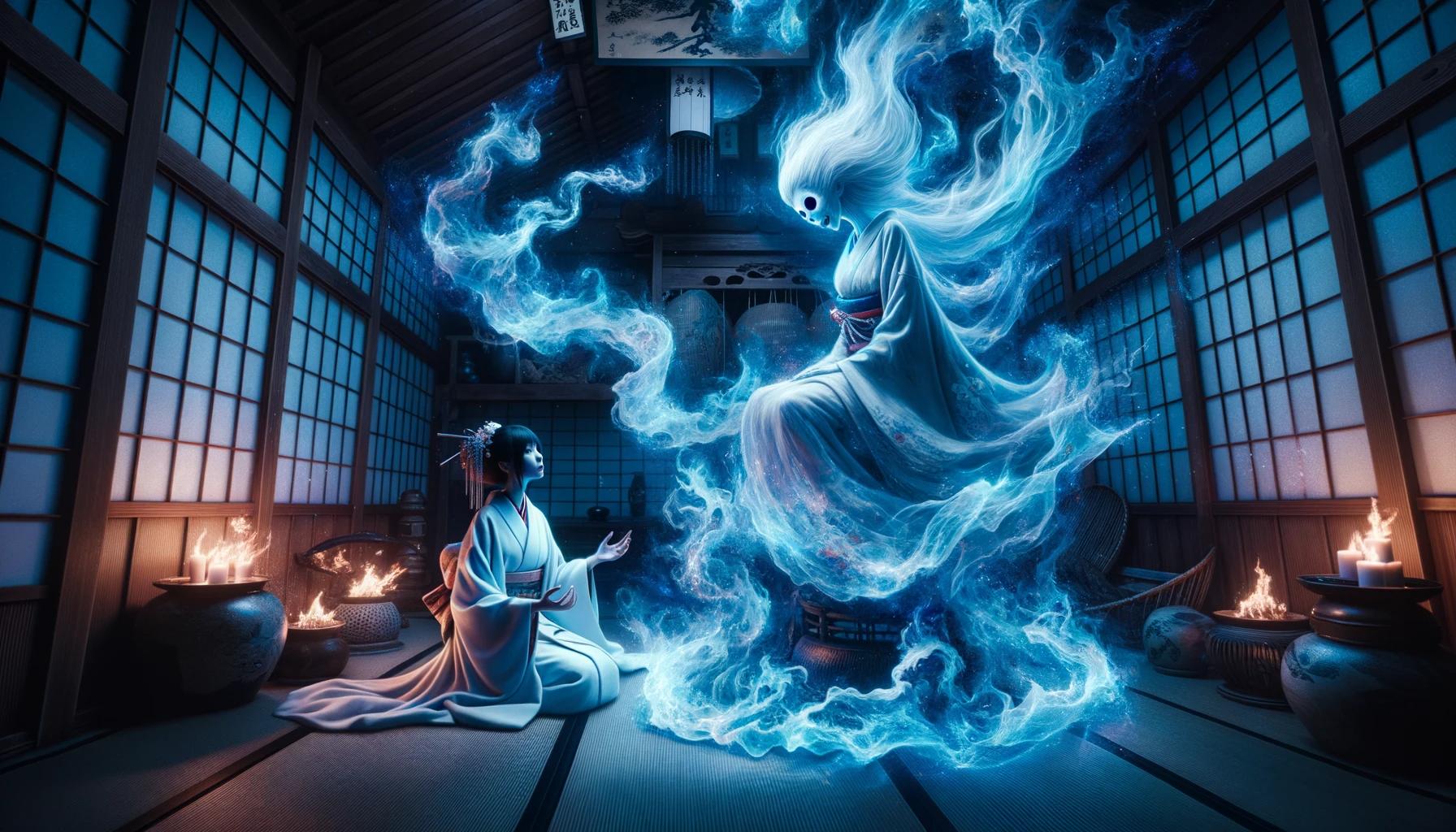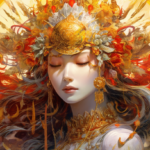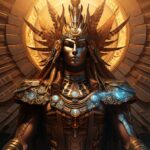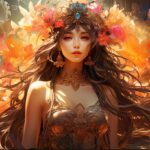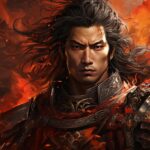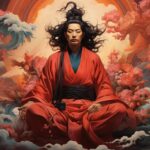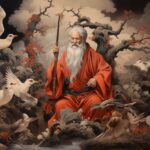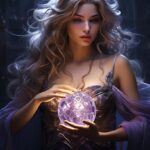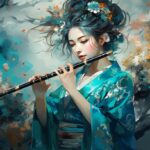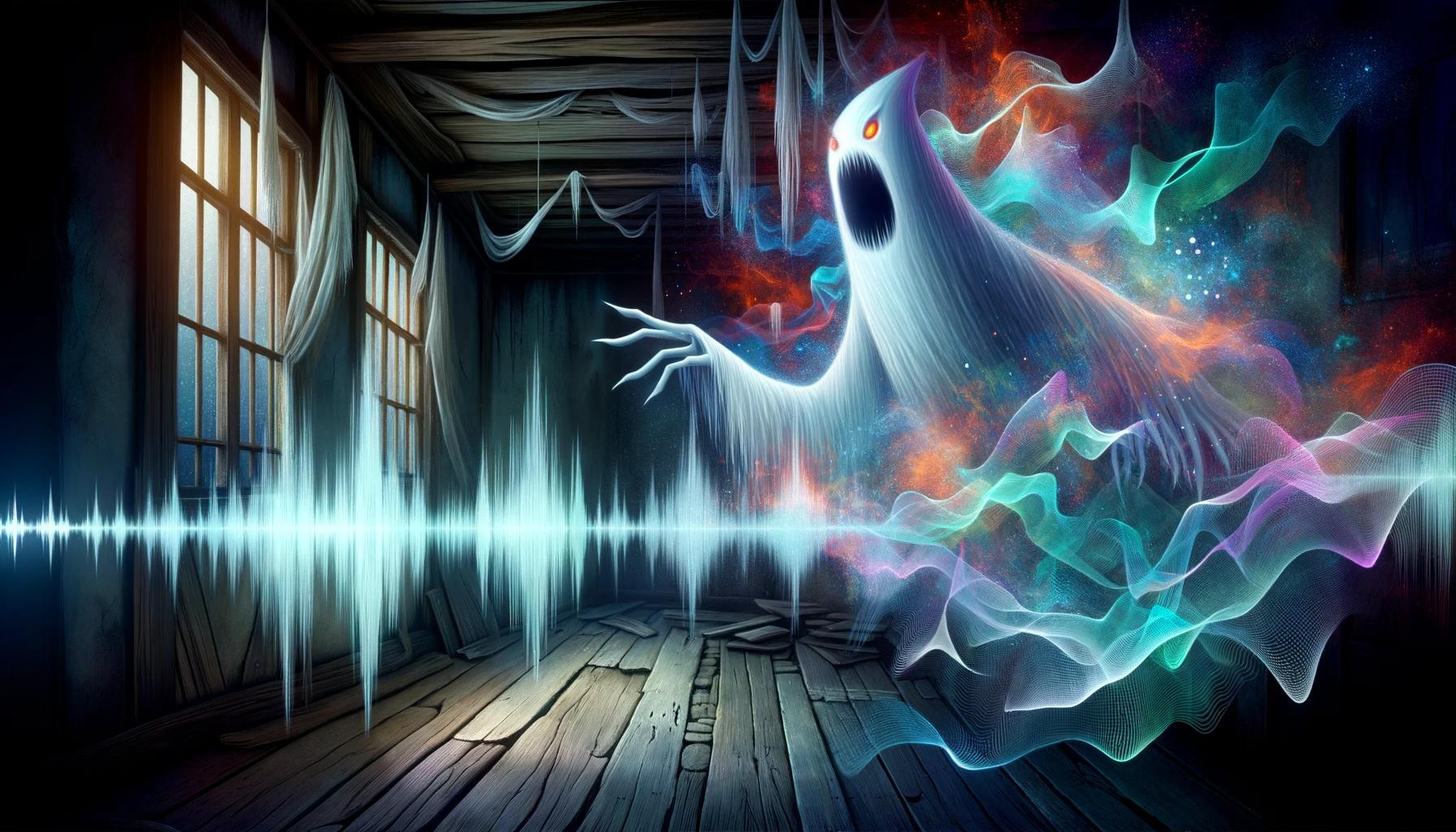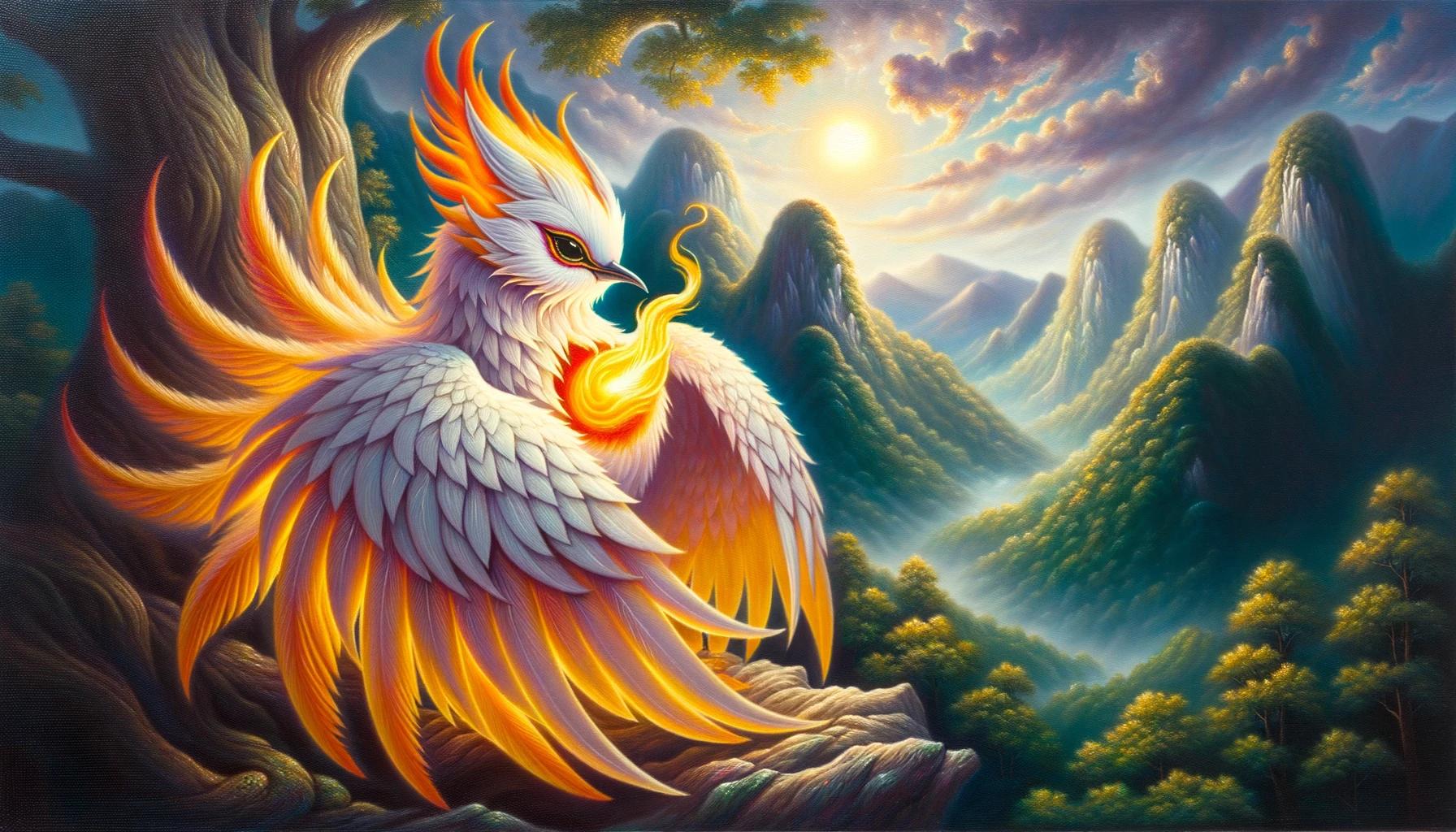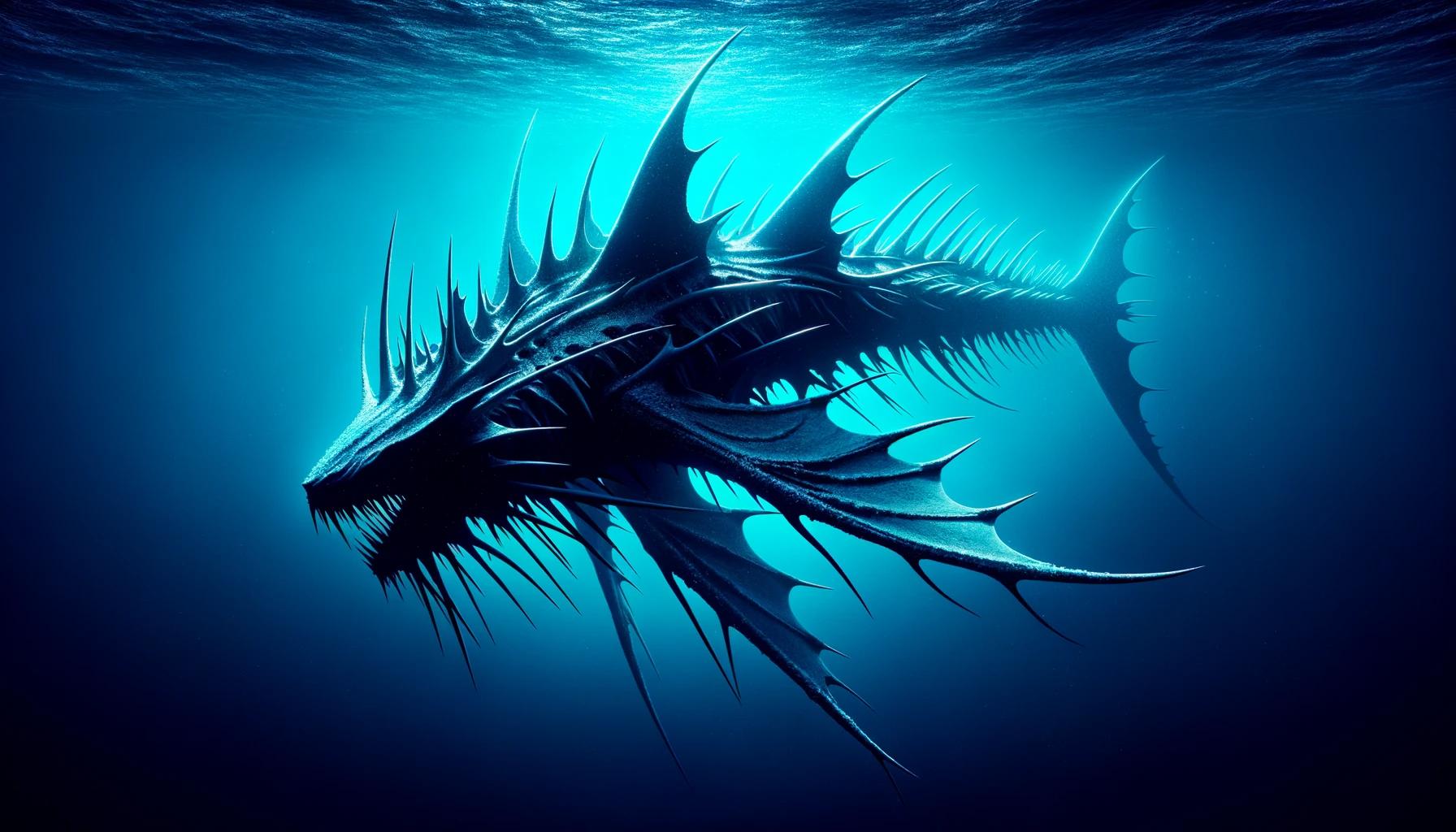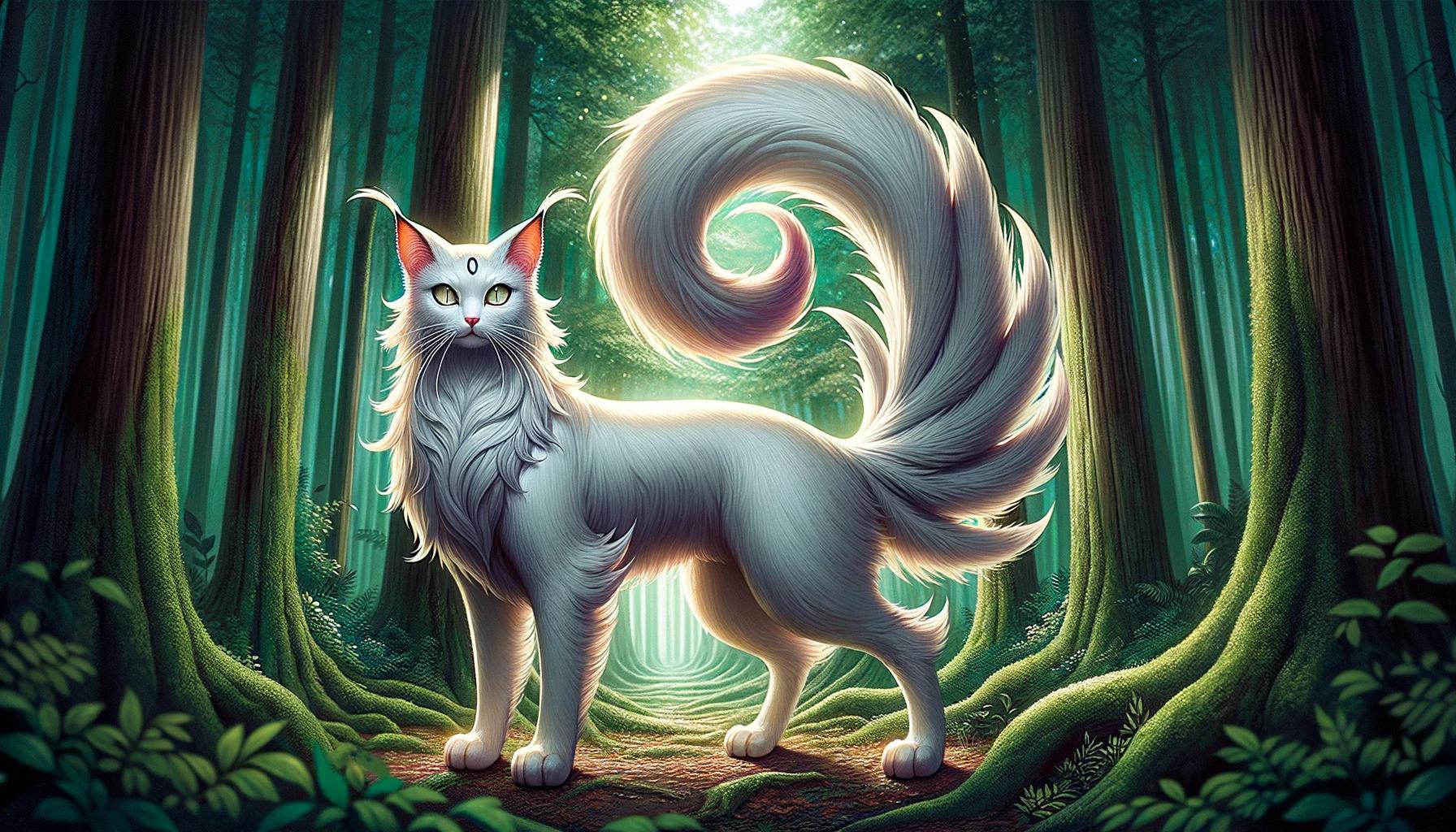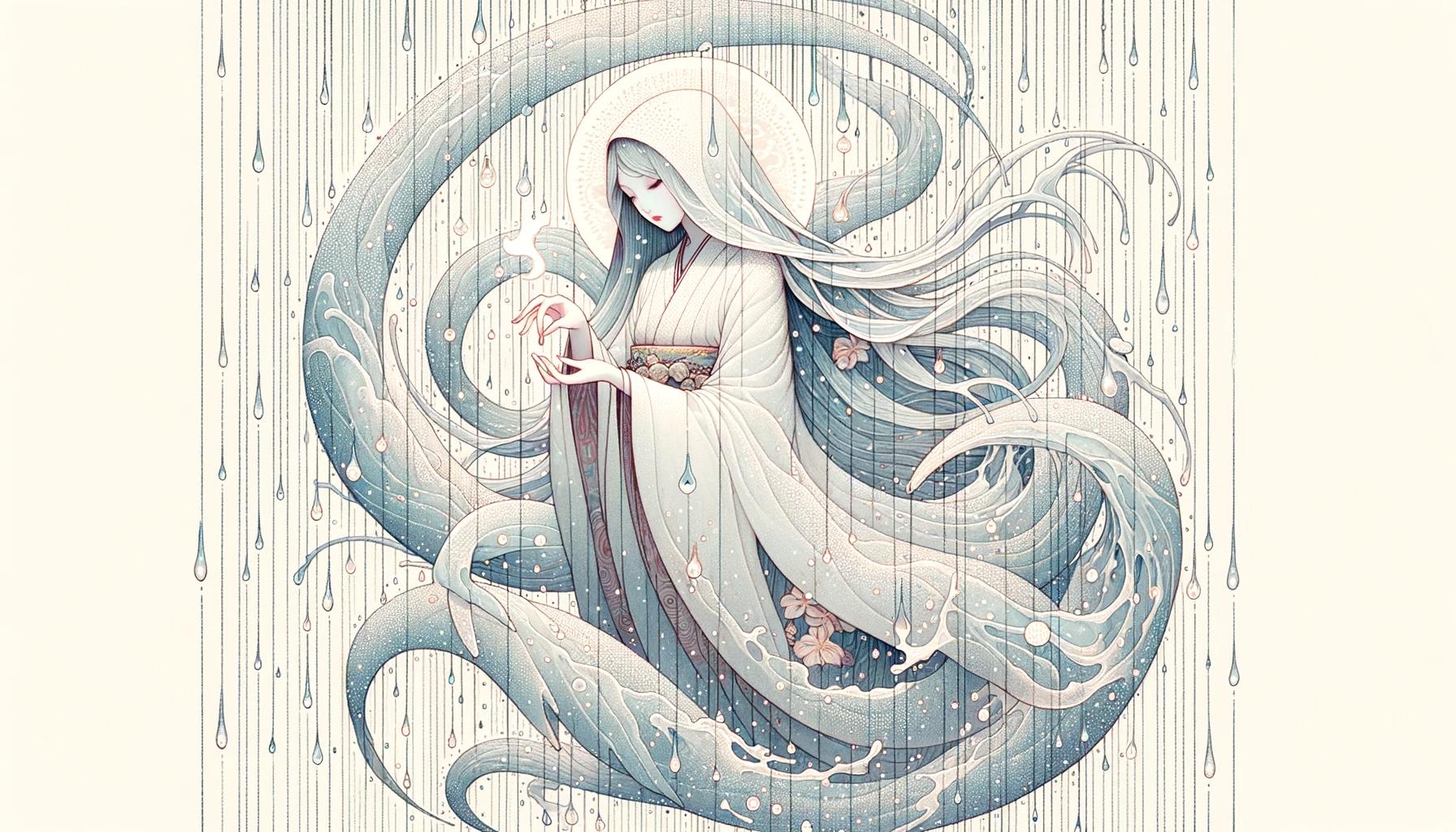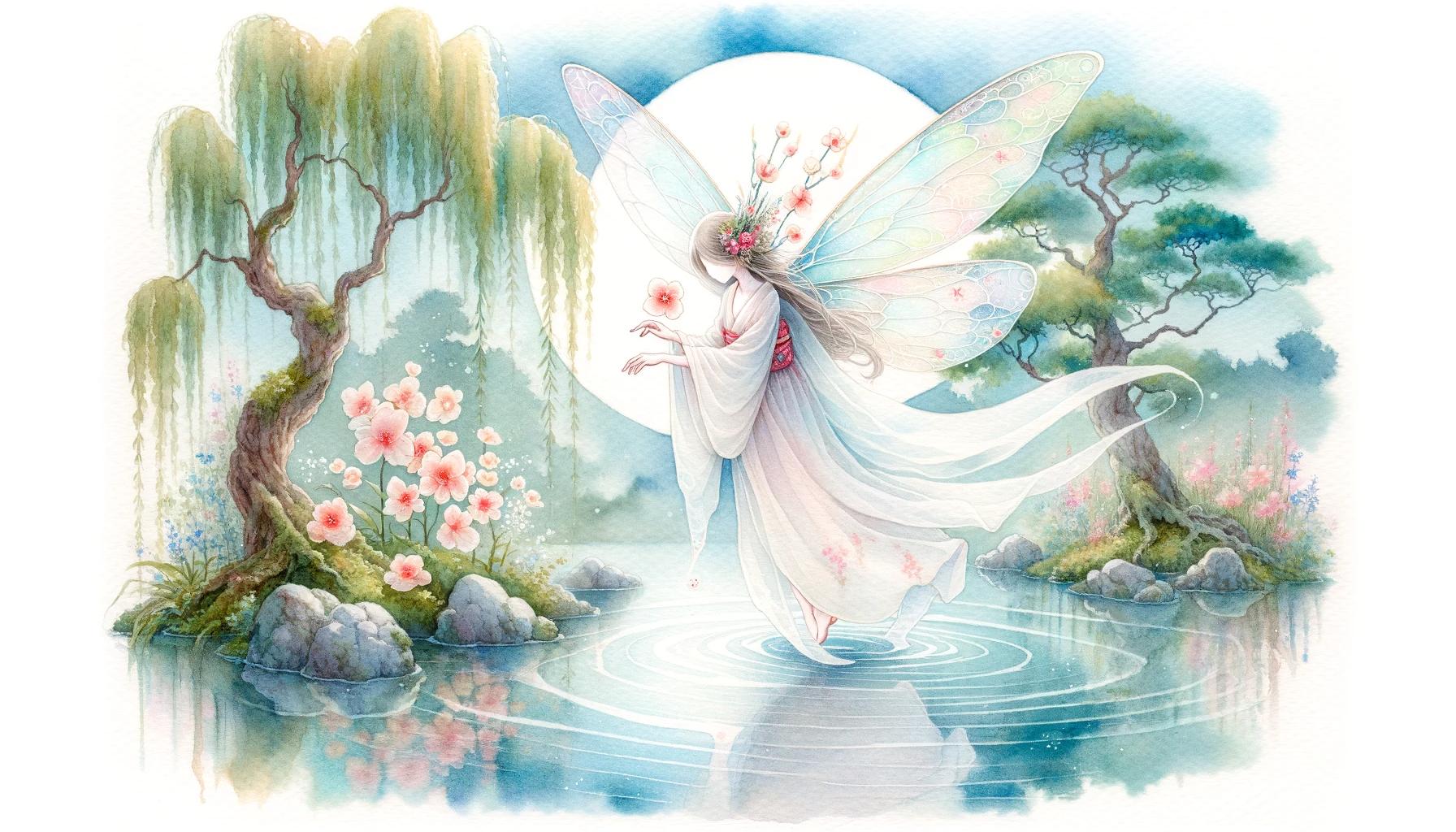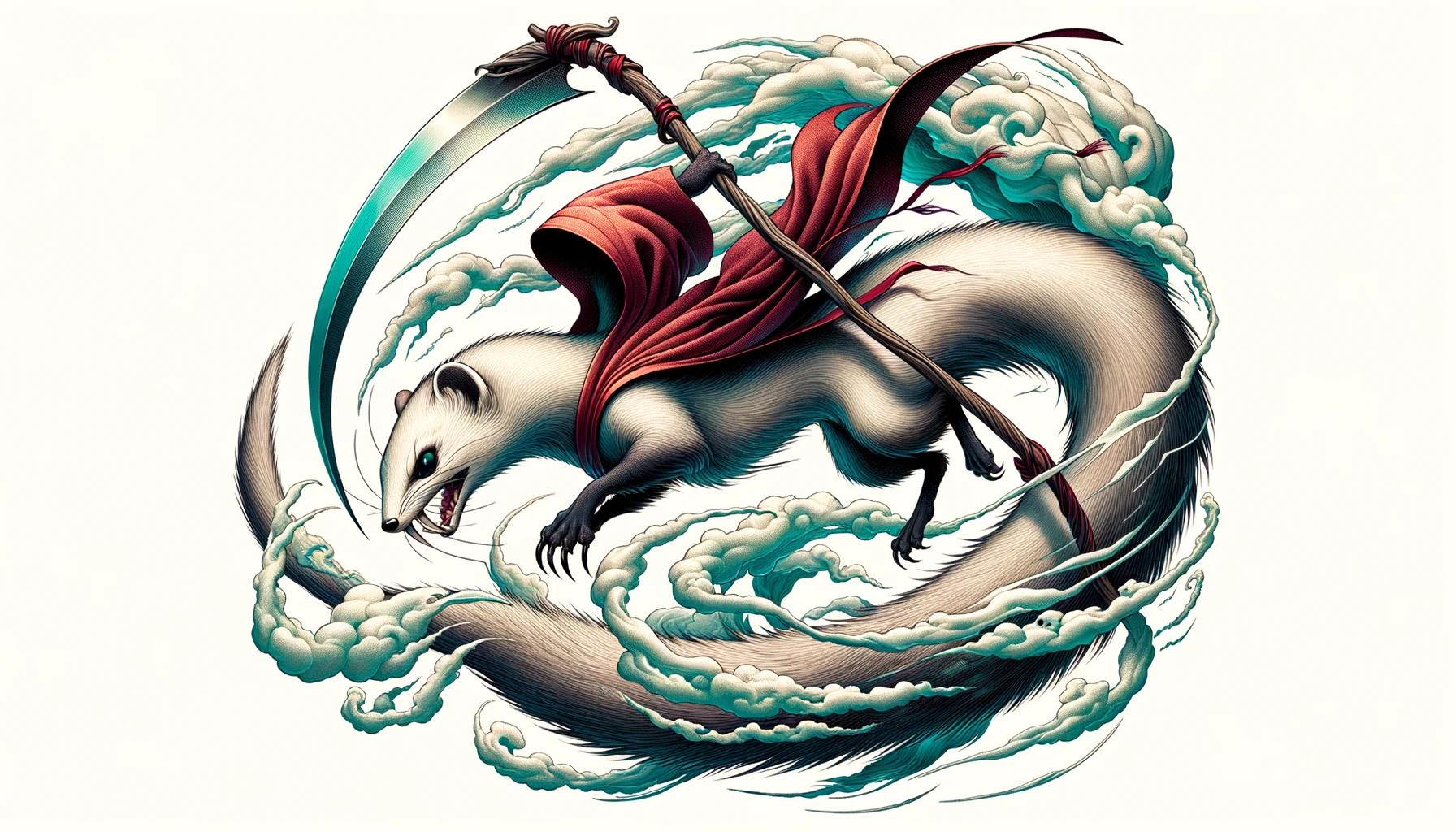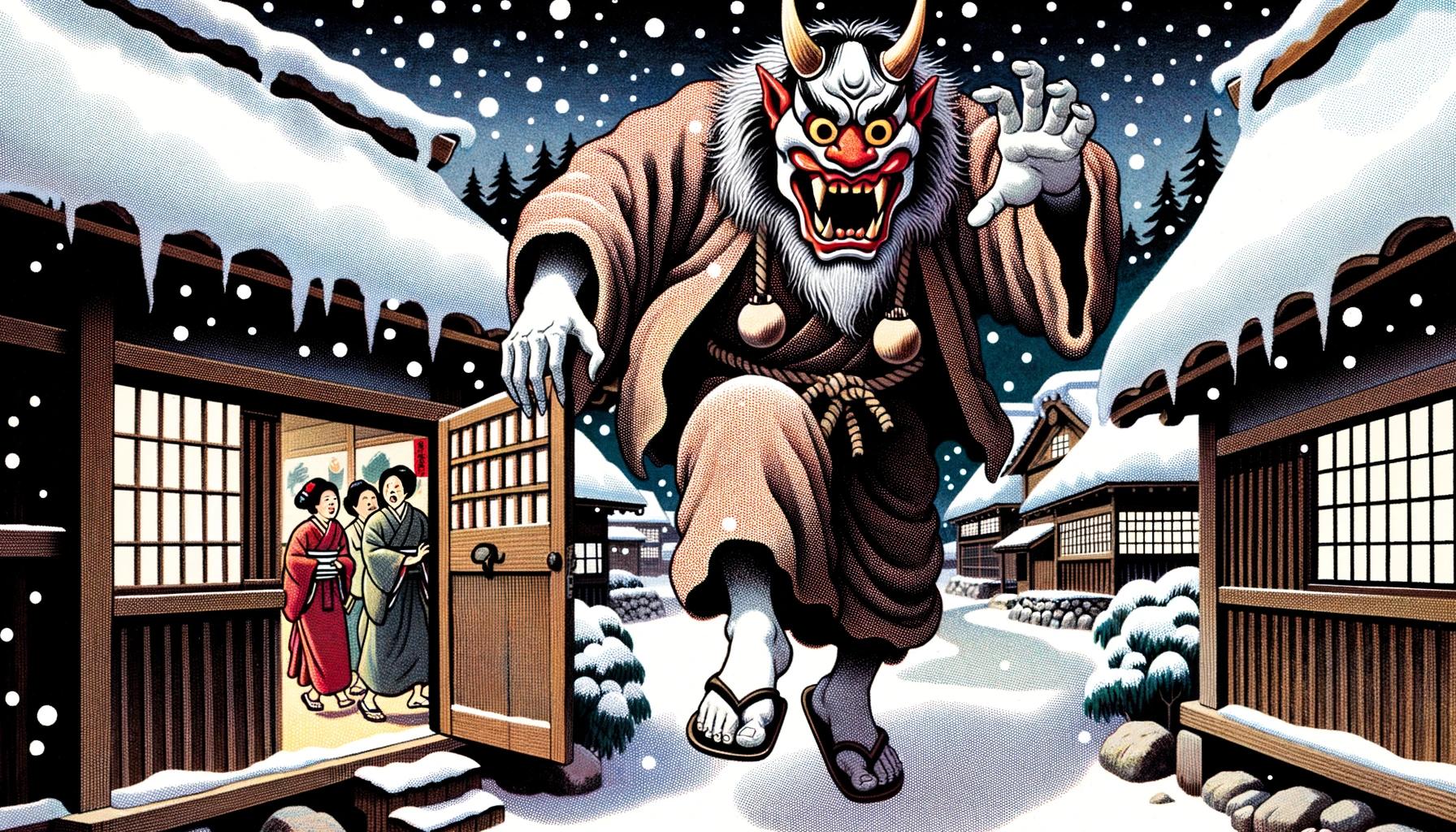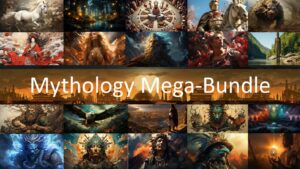‘Aoandon Yokai: Unveiling the Mysterious Japanese Folklore Creature’
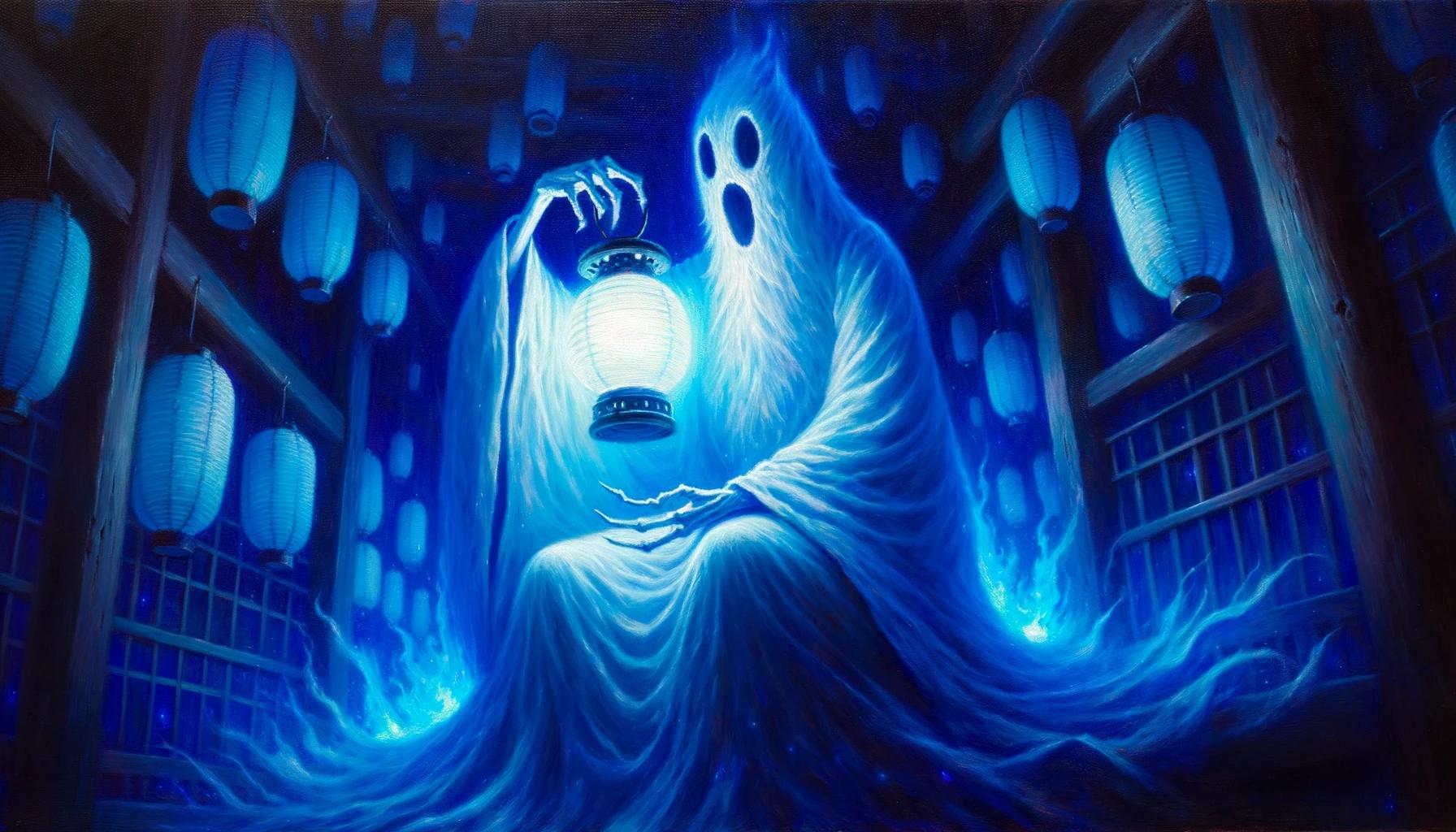
The Aoandon yokai is a creature deeply rooted in Japanese mythology and folklore. It is prominently featured in Toriyama Sekien’s work ‘Konjaku Hyakki Shūi’ and associated with the eerie Hyakumonogatari Kaidankai game.
This game involves storytelling while gradually extinguishing a hundred candles, and it is believed that the Aoandon appears when the last candle goes out. Descriptions depict the Aoandon as a female spirit with long black hair, horns, sharp teeth, and a white kimono.
Exploring its origins, significance, and contemporary representations, this article delves into the enigmatic world of the Aoandon yokai and its cultural relevance.
Origins of Aoandon Yokai
The Aoandon yokai traces its origins back to Japanese mythology and folklore, captivating the imagination with its enigmatic nature. Let’s delve into the rich history and cultural significance surrounding this mysterious creature.
Mythology and Folklore of Aoandon Yokai
Within Japanese mythology, the Aoandon yokai is believed to be an otherworldly being, entwined with tales of spirits and supernatural occurrences. It resides in the realm of yokai, where the line between the physical and spiritual worlds blurs.
This creature has intrigued storytellers and artists for centuries.
Representation in ‘Konjaku Hyakki Shūi’
The renowned artist Toriyama Sekien documented the existence and appearance of the Aoandon yokai in his masterpiece, ‘Konjaku Hyakki Shūi.’ Through his intricate illustrations and descriptions, Sekien added to the rich tapestry of Japanese folklore, immortalizing the image of this creature.
Connection to Hyakumonogatari Kaidankai Game
Aoandon finds its roots in the chilling tradition of Hyakumonogatari Kaidankai, a Japanese game in which participants gather to share ghost stories while extinguishing a hundred candles. As the final candle flickers out, it is believed that something eerie and supernatural emerges from the darkness, often associated with the manifestation of the Aoandon yokai.
The Hyakumonogatari Kaidankai game sets the stage for encountering these otherworldly entities, as the atmosphere becomes filled with suspense and anticipation. Its connection to Aoandon adds a unique layer of mystique to the game, heightening the sense of terror and wonder experienced by those who dare to communicate with the spirit world.
Hyakumonogatari Kaidankai: The Ghost Story Game
The Hyakumonogatari Kaidankai, a captivating Japanese tradition, revolves around the telling of ghost stories as a hundred candles gradually extinguish. This immersive game carries a rich history and cultural significance, captivating participants with its chilling atmosphere and supernatural allure.
Let’s delve into the various aspects of this enthralling game.
Tradition and History of Hyakumonogatari Kaidankai
The roots of Hyakumonogatari Kaidankai trace back to ancient Japan, renowned for its fascination with the supernatural. Over time, this tradition evolved, weaving together elements of storytelling and occult practices. Participants gathered in a dimly lit room, ready to embark on a journey through eerie tales and paranormal encounters.
Rituals and Practices during the Game
The gameplay of Hyakumonogatari Kaidankai followed a meticulous ritual. As each story concluded, one candle was extinguished, gradually shrouding the room in darkness. The storytellers aimed to evoke an atmosphere of tension and suspense, enhancing the potential for supernatural encounters.
Some variants of the game even incorporated the presence of a secluded room with a mirror to intensify the mystery.
The Role of Aoandon in the Game
Among the various apparitions believed to manifest during Hyakumonogatari Kaidankai, the Aoandon yokai held a significant position. Considered the spirit that appeared when the last candle flickered out, the Aoandon’s presence sent shivers down the spines of participants.
While the exact nature of its manifestation remained elusive, accounts have described eerie phenomena such as giant descending shadows or strange movements in the darkness.
Playing Hyakumonogatari Kaidankai was not merely about storytelling; it was an immersive encounter with supernatural forces, invoking an unsettling ambience that captivated participants for centuries.
Aoandon Yokai: Characteristics and Appearance
Within Japanese folklore, the Aoandon yokai possesses intriguing characteristics and a distinct appearance that sets it apart from other supernatural beings. Explored in this section are its description by Toriyama Sekien, its origins and influences in Japanese folklore, and the symbolism behind the blue lantern associated with it.
Description by Toriyama Sekien
Toriyama Sekien’s depiction of the Aoandon yokai portrays it as a female spirit with long, black hair, adorned with two horns on its head, and possessing sharp black teeth. This haunting figure is said to be dressed in a flowing white kimono, which adds to its ethereal presence.
Origins and Influences in Japanese Folklore
The origins of the Aoandon yokai are deeply rooted in Japanese mythology and folklore. It is believed to be a fusion of two existing entities: Aoi Nyobo, also known as the “blue wife,” and Hannya, a female demon associated with jealousy and rage.
The merging of these mythical figures creates the unique and enigmatic being known as Aoandon.
Symbolism of the Blue Lantern
One significant element tied to the Aoandon yokai is the symbolism of the blue lantern. During the traditional Hyakumonogatari Kaidankai game, blue lanterns specially crafted with blue-dyed paper panels, framed in bamboo, were used instead of candles.
These lanterns, known as andon, contribute to the eerie ambiance of the game and hold deep symbolic meaning, as the blue light is believed to attract supernatural entities like the Aoandon yokai.
- The Aoandon yokai is a female spirit characterized by long, black hair, two horns, sharp black teeth, and a white kimono.
- It merges the figures of Aoi Nyobo and Hannya from Japanese folklore.
- Blue lanterns, known as andon, play a significant role and symbolize the presence of the Aoandon yokai.
Legends and Encounters with Aoandon Yokai
Legends surrounding the manifestation of Aoandon yokai are steeped in mystery, intriguing those interested in the supernatural world.
While the specifics remain elusive, accounts of encounters and sightings have captivated countless individuals over the years. These stories often describe eerie and unexplained phenomena, leaving people in awe and wonder.
Mystery Surrounding Aoandon’s Manifestation
The mystery deepens when it comes to understanding how Aoandon manifests itself in the physical realm. While the exact nature of its appearance and behavior is shrouded in ambiguity, witnesses have reported peculiar occurrences during encounters.
Some claim to have felt a chilling presence in the air, while others mention hearing eerie whispers in the darkness. These inexplicable phenomena only add to the enigmatic nature of the Aoandon yokai.
Reported Encounters and Sightings
Over the centuries, numerous individuals have claimed to have had encounters with Aoandon. These encounters span across different regions of Japan and vary in their descriptions. Witnesses have reported seeing a figure resembling a woman in a white kimono, with long black hair and sharp teeth.
Some accounts mention glimpses of glowing blue lanterns in the distance, believed to be associated with Aoandon’s presence. Each sighting contributes to the rich tapestry of legends surrounding this elusive yokai.
Supposed Powers and Abilities
While the true extent of Aoandon’s powers and abilities remains uncertain, folklore depicts this yokai as a formidable presence. According to some accounts, Aoandon possesses the ability to manipulate shadows and darkness, evoking feelings of unease and fear.
The yokai is believed to have a penchant for storytelling, using its abilities to captivate and enthrall its unsuspecting victims, further enhancing its mysterious aura.
Possible powers and abilities attributed to Aoandon include:
- Manipulation of shadows and darkness
- Ability to evoke fear and unease
- Gift of captivating storytelling
- Possession of supernatural knowledge and insight
These alleged powers contribute to the mythos surrounding Aoandon yokai, making it a fascinating and often feared entity within Japanese folklore.
Aoandon Yokai in Modern Culture
Depictions in Onmyoji Mobile Game
The Aoandon yokai has found its way into the popular mobile game, Onmyoji. Within the game, Aoandon appears as a shikigami, an summonable spirit, who has a fondness for storytelling. Players can interact with this character and delve into the mystical tales she has to offer.
While the game does not provide extensive details about Aoandon, it presents an opportunity for players to engage with this iconic yokai and experience a modern interpretation of its allure.
Aoandon Yokai in Pop Culture and Media
Beyond the realm of gaming, Aoandon has also made appearances in various forms of pop culture and media.
Whether it be in literature, movies, or artwork, this enigmatic creature has captivated the imaginations of many. Its distinct appearance and connection to the supernatural make it a compelling figure to explore in artistic expressions.
Aoandon’s presence in the modern cultural landscape showcases its continued relevance and enduring appeal to both creators and audiences alike.
Contemporary Beliefs and Interpretations
In contemporary times, beliefs and interpretations surrounding Aoandon may vary. Some perceive it purely as a mythical creature tied to ancient folklore, while others view it as a symbol of supernatural forces present in our world.
Its presence in the Hyakumonogatari Kaidankai game and continued significance in popular culture sparks discussions and debates about the nature of yokai and their influence on our lives. Curiosity and fascination with Aoandon persist, prompting individuals to seek out deeper meanings and understandings of this intriguing yokai.
Fan Feed: Other Yokai Creatures
Welcome to the Fan Feed section, where we explore other fascinating Yokai creatures that captivate the imagination. These supernatural entities from Japanese folklore continue to intrigue and inspire creators across various mediums.
Aka Manto: The Red Cape Ghost
Aka Manto, also known as the Red Cape Ghost, is a notorious Yokai known for haunting public restrooms. Legend has it that this devious spirit appears to unsuspecting victims and offers them a choice between a red cloak or a blue cloak.
However, choosing the red cloak often leads to a horrific fate, while the blue cloak brings a different set of eerie consequences.
Yūrei: The Vengeful Spirits
Yūrei are vengeful spirits of those who have met tragic ends. With their pale, white appearance and long, disheveled hair, Yūrei seek revenge on the living. These spirits often haunt specific locations associated with their untimely demise, seeking solace or retribution for their suffering.
Kitsune: The Trickster Fox Yokai
Kitsune, known as the Trickster Fox Yokai, are intelligent shapeshifters with a mischievous nature. Often depicted as foxes with multiple tails, Kitsune possess magical abilities and are known to play tricks on humans.
Some stories portray them as benevolent protectors, while others show their cunning and deceptive nature.
Tengu: The Mysterious Bird-like Yokai
Tengu, the enigmatic bird-like Yokai, are powerful creatures often associated with mountains and forests. They possess supernatural abilities and are known for their skill in martial arts and mastery of swords.
Tengu can be either malicious or protective towards humans, making them an intriguing figure in Japanese folklore.
- Aka Manto: The Red Cape Ghost
- Yūrei: The Vengeful Spirits
- Kitsune: The Trickster Fox Yokai
- Tengu: The Mysterious Bird-like Yokai
.

